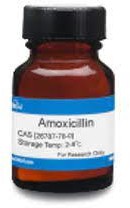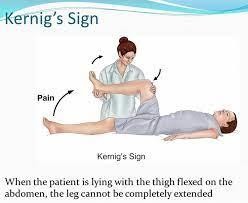Amoxicillin trihydrate 300 mg oral (PO) has been prescribed for a client with an oral infection. The medication is available in a liquid suspension that is available as 250 mg/5 mL. How many milliliters should the nurse administer?
Record your answer using a whole number.
6
4
1.2
5
The Correct Answer is A
Choice A rationale: This is the correct answer. It corresponds to 300 mg of the drug ((300x 5)/250).
Choice B rationale: This is incorrect because it is too low. It is the amount of milliliters that corresponds to 200 mg of amoxicillin trihydrate, which is less than the prescribed dose of 300 mg.
Choice C rationale: This is incorrect because it is too low. It is the amount of milliliters that corresponds to 60 mg of amoxicillin trihydrate, which is not enough to treat an oral infection.
Choice D rationale: This is incorrect because it is too low. It is the amount of milliliters that corresponds to 250 mg of amoxicillin trihydrate, which is less than the prescribed dose of 300 mg.
 |
Nursing Test Bank
Naxlex Comprehensive Predictor Exams
Related Questions
Correct Answer is A
Explanation
Choice A rationale: The Tensilon test involves injecting edrophonium, and in myasthenia gravis, temporary improvement in muscle strength confirms the diagnosis by demonstrating increased acetylcholine activity at the neuromuscular junction.
Choice B rationale: This describes the pathophysiology of myasthenia gravis but doesn’t directly confirm the diagnosis via the Tensilon test.
Choice C rationale: While this may be seen in myasthenia gravis, the Tensilon test specifically aims to observe improved muscle strength after administration.
Choice D rationale: While the presence of these antibodies is a characteristic of myasthenia gravis, the Tensilon test is used to assess the immediate response to the medication for diagnostic confirmation.
Correct Answer is B
Explanation
Choice A rationale: Rotating the neck to one side while observing the eyes moving to the opposite side is a procedure for testing for oculocephalic reflex or doll's eye
phenomenon, which indicates brainstem function.
Choice B rationale: This is the correct answer. Kernig's sign is a clinical sign that indicates meningitis, which is an inflammation of the membranes that cover the brain and spinal cord. To test for Kernig's sign, the nurse should flex the patient's hip to 90 degrees and then attempt to extend the knee. A positive Kernig's sign is when the patient
experiences pain in the lower back or hamstring, resists knee extension, or involuntarily flexes the opposite leg.
Choice C rationale: Stroking the lateral aspect of the sole of the patient's foot and observing for dorsiflexion of the big toe is a procedure for testing for Babinski's sign, which indicates upper motor neuron lesion or damage.
Choice D rationale: Passively flexing the patient's neck forward and observing for hip and knee flexion is a procedure for testing for Brudzinski's sign, which also indicates meningitis.
 |
Whether you are a student looking to ace your exams or a practicing nurse seeking to enhance your expertise , our nursing education contents will empower you with the confidence and competence to make a difference in the lives of patients and become a respected leader in the healthcare field.
Visit Naxlex, invest in your future and unlock endless possibilities with our unparalleled nursing education contents today
Report Wrong Answer on the Current Question
Do you disagree with the answer? If yes, what is your expected answer? Explain.
Kindly be descriptive with the issue you are facing.
